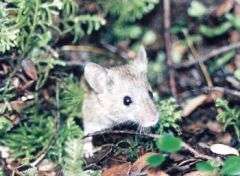Viking mice tell tales of British Isles

(PhysOrg.com) -- The humble house mouse can tell us a lot about the history of colonisation on the British Isles according to research published today in the journal Proceedings of the Royal Society B: Biological Sciences.
Scientists say that as humans have long transported house mice in their ships, their colonisation history should reflect human migrations and trading links.
Mapping genetic traits found in house mice against their geographic location scientists have been able to plot the movements of both men and mice. Researchers from the University of Aberdeen's Institute of Biological & Environmental Sciences and researchers from the University of York studied DNA sequence variations in 328 mice from 105 localities.
Their research found that mice from the northern and western peripheries of the British Isles apparently arrived and colonised with the Norwegian Vikings. Mice from most of mainland Britain show some of the same DNA sequences as mice from Germany, probably reflecting the movements of Iron Age people and mice.
The research has the potential to reveal novel aspects of human history. As house mice would have needed large human settlements to form viable populations, the movements of mice may point to earlier development of these settlements than first thought.
Scientists hope that future studies with mice will help document more fine-scale Viking movements such as the colonisation of different parts of Faroe, Iceland and even North America.
Provided by University of Aberdeen















